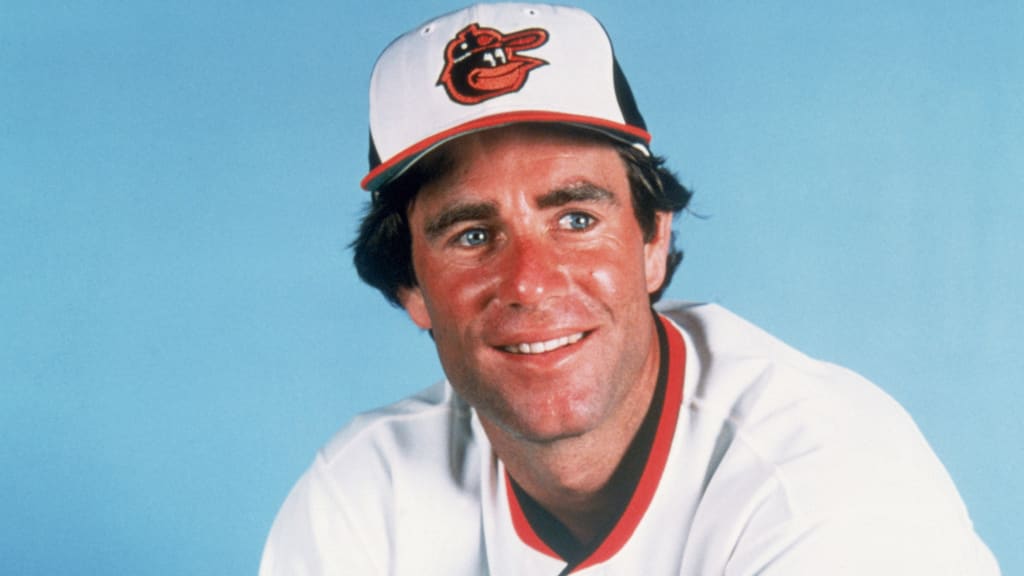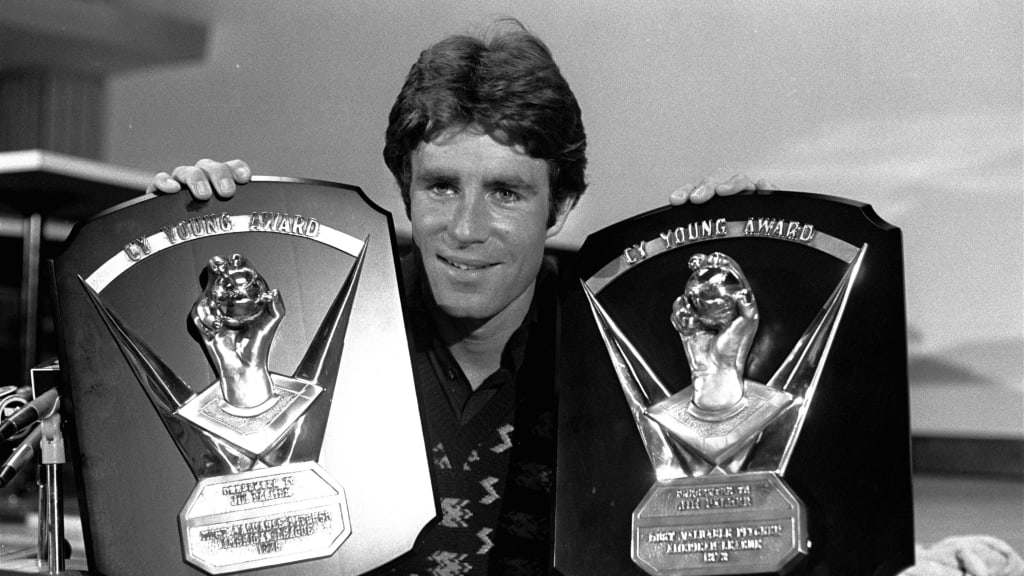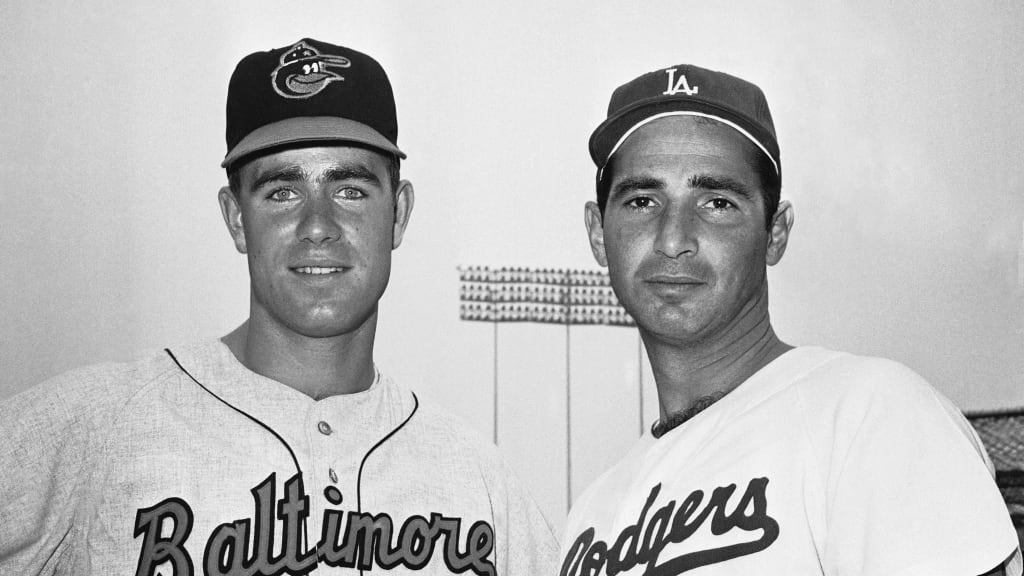
If there is a greatest generation of pitchers in the past 100 years, it is probably the generation of starters in the 1960s and '70s and into the '80s. That was Jim Palmer’s time, the '70s in particular. He won 20 games eight times and was injured in '74 and '79, otherwise he might've gone 10 for 10. Palmer won three American League Cy Young Awards in four years ('73, ’75, ’76) and finished second to Sparky Lyle in ‘77. In 100 years, the only other starter to win 20 games eight times in a decade was Warren Spahn from '50-59.
Spahn was finishing up his Hall of Fame career when Palmer was a kid. Palmer’s last season in the big leagues was 1984, which happened to be the beginning of Roger Clemens' career. It means that if you look at Palmer’s Orioles career end to end (268-152, 2.86 ERA), he pitched in a time of seven 300-game winners: Spahn, Clemens, Steve Carlton, Tom Seaver, Nolan Ryan, Gaylord Perry and Don Sutton. Sandy Koufax pitched in that era, so did Juan Marichal, Bob Gibson and Ferguson Jenkins. Robin Roberts even played a season with the O's when Palmer was a rookie. In the first six years of the '70s, Catfish Hunter was 129-63 with a 2.83 ERA with the A’s.
Mike Cueller won 20 games four times when he was in the same rotation with Palmer. Dave McNally did the same. And in 1971, the Orioles had four 20-game winners: Palmer, Cueller, McNally and Pat Dobson. If you don’t think this was a golden age of starting pitching, find another one in the past century.
But in that century, nobody had a better decade, start to finish, than Palmer had in the 1970s.

Palmer played for Earl Weaver. He played alongside the great Brooks Robinson. He had Mark Belanger, one of the best defensive players in baseball history, at shortstop. There was one stretch when the Orioles won 109, 108 and 101 games, from 1969-71, even if they only won one World Series.
"It didn’t hurt to be in the right place at the right time,” Palmer said.
It was plenty more than that. Put Palmer's Baseball-Reference page record on your laptop screen and look in awe. It’s one of those decades that give off a beam of light. And in the National League, whether he was facing them or not, he was going toe-to-toe, in every way, with Seaver and Carlton. High cotton.
And as a 20-year-old kid in Game 2 of the 1966 World Series, Palmer threw a shutout at Dodger Stadium in the last game Koufax pitched in the big leagues. Koufax left after the sixth, when the O's led, 4-0. But that was the day when his center fielder, Willie Davis, committed three errors in the same inning. Koufax was only charged with one earned run, though even if he’d gone the distance, it wouldn’t have been enough to beat Palmer that day.
Palmer won an MLB-high 186 games in the 1970s. Only twice did Palmer ever have an ERA over 3.00. He didn’t strike out guys like so many of the immortals he was up against over his career, from '65-84. Who cares? Palmer wasn’t just great. He was even greater than you remember.
“I had the highest winning percentage in baseball from when I showed up in ’65 to the end of my career,” he said on Sunday.
Seaver, pitching on inferior teams than Palmer had in Baltimore, won 178 games with the Mets and the Reds in the 1970s, against 101 losses. Carlton won 158 with the Phillies, but over the first five years of the decade, the Phillies’ record was 350-453. Carlton might have had the greatest individual season any starter has had in 100 years, in '72, going 27-10 with a 1.97 ERA in 41 starts, including 30 complete games and 310 strikeouts -- in a season when the Phillies won just 59 games.
“Played A-ball against Carlton,” Palmer said. “I remember a skinny left-hander throwing about 91 or 92 [mph]. Not a hard thrower. After that? All he did after that was get bigger and stronger and develop the best slider ever.
“Listen,” Palmer continued, “here’s the deal about our generation of pitchers: I believe we all made each other better. It’s what Hall of Famers are supposed to do, right?”
I wrote last week about what Koufax and Gibson and Marichal did in the 1960s. Now it’s the next decade, and Seaver and Carlton get added to the list. But here’s the thing about Koufax, Gibson, Marichal, Seaver and Carlton: They all pitched in the NL. Palmer pitched in the AL, where the designated hitter joined the party in '73.
“Nothing against anybody,” said Buck Showalter, who managed the O's for eight-plus seasons and got to know Palmer, who was the television analyst on MASN, “but the other guys you’re talking about were getting easy outs that Jim wasn’t.”
I asked Palmer how he was able to do what he did across two decades that saw a rotator cuff injury in the 1960s, an ulnar nerve issue in '74, and finally a back injury that stole most of the ’79 season from him.
He laughed again.
“Well,” he said, “you have to be a little obsessed.”
Palmer paused and then said, “But you have to remember that it was a very good time to be a Baltimore Oriole.”

Forget about pitching against Koufax, I said to Palmer, "What was it like to hit against him?"
“Here’s the best way to describe it: You could hear him. You just couldn’t quite see him," Palmer said.
Palmer didn’t blow you away. All he did was win.



